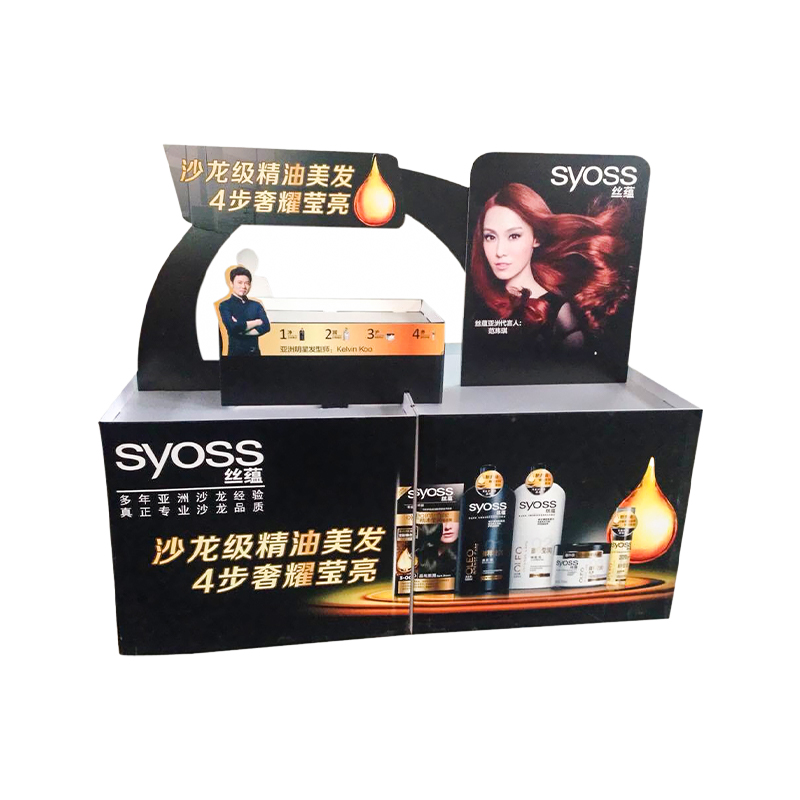-
 +86-0557-3781111 / +86-0571-56396277
+86-0557-3781111 / +86-0571-56396277
 +86-0557-3781111 / +86-0571-56396277
+86-0557-3781111 / +86-0571-56396277
Designing cardboard retail displays for high-turnover products presents unique challenges due to the frequent changes in inventory, product variety, and the need for displays that can adapt quickly. Here are some of the key challenges associated with designing these displays:
1. Adaptability to Frequent Product Changes
Challenge: High-turnover products, such as seasonal items or limited-edition releases, often require rapid adjustments to the display, including different sizes or shapes of products.
Solution: The display must have a modular or flexible design that allows for easy reconfiguration. Using adjustable shelves, removable partitions, and interlocking components ensures the display can accommodate varying product sizes and quantities. This allows retailers to easily adapt the display without needing entirely new structures for every product update.
2. Ensuring Stability and Durability
Challenge: With frequent restocking and changes, the display may undergo regular handling, which can lead to wear and tear or instability, especially when accommodating heavier or bulkier items.
Solution: Use reinforced cardboard, double-wall construction, or corrugated inserts for additional strength. Strategic design, such as bracing or supportive base structures, can also help maintain stability during frequent changes and handling.
3. Quick Assembly and Disassembly
Challenge: High-turnover products often require displays to be set up and taken down quickly, sometimes multiple times in a short period. This places pressure on the design to be easy to assemble and disassemble.
Solution: Utilize tool-free assembly systems with pre-scored fold lines, interlocking tabs, or snap-fit components. This allows for quick setup and breakdown while maintaining the display's structural integrity. Clear assembly instructions should also be included for efficiency.
4. Effective Product Presentation
Challenge: High-turnover products may need to be displayed in a way that maximizes visibility and accessibility to customers, even when product quantities change frequently.
Solution: Slanted shelves, tiered displays, or angled product placement can enhance product visibility. Adjustable dividers or removable trays can help accommodate different product sizes while ensuring a clean, organized presentation that attracts customer attention.
5. Inventory Management
Challenge: Retailers may face difficulties in managing high-turnover products, as frequent changes in stock levels can lead to disorganized displays or a mismatch between available inventory and the space available on the display.
Solution: Design displays with clear inventory tracking systems, such as shelf tags, QR codes, or digital labels that update automatically to reflect stock levels. Open-front shelving can also make it easier for customers to see what is available and help restocking efforts.

6. Cost Efficiency
Challenge: The frequent redesigns and short lifespan of displays for high-turnover products can increase the overall cost of production and logistics for cardboard displays.
Solution: Use cost-effective materials such as recycled cardboard and simplified designs that minimize waste and reduce manufacturing costs. Modular components that can be reused or reconfigured for different products also help cut costs in the long term.
7. Brand Consistency
Challenge: High-turnover products often have limited shelf lives or are part of short-lived promotions, which can make it difficult to maintain consistent branding across multiple product cycles.
Solution: Design displays that incorporate interchangeable branding panels or removable graphics so the display can easily adapt to new products while maintaining consistent brand identity. This flexibility ensures that the display supports both the current product and the overarching brand image.
8. Space Efficiency
Challenge: High-turnover products often require more frequent restocking, which can lead to clutter or inefficient use of retail space if not properly managed.
Solution: Ensure the display is designed to make the most of vertical space and compact layouts, such as tower displays or stackable units. Efficient space utilization helps maximize the display’s impact even in smaller retail environments.
9. Sustainability Concerns
Challenge: Frequent production of new displays for high-turnover products can contribute to waste, especially if each display is disposed of after use.
Solution: Use recyclable and sustainable materials, and design the display for reuse whenever possible. Eco-friendly coatings or finishes can also reduce environmental impact. Additionally, the design can incorporate elements that allow for easy disassembly for recycling or reuse in other settings.
10. Customer Interaction and Experience
Challenge: High-turnover products often require displays that can engage customers, encourage interaction, and highlight promotional messaging effectively.
Solution: Integrate interactive elements such as QR codes for additional information, product samples, or touchscreen interfaces that allow customers to learn more about the product. Engaging design elements like bright colors, bold messaging, or light-up features can also increase customer interest.
Annhiu Address: Yishan Road and Qingshengou Road Intersection, Suzhou Economic Development Zone, Anhui, China
Tel: +86-0557-3781111
E-mail: [email protected]
Hangzhou Address: Building 3, No.286, Renliang Road, Renhe Street, Yuhang District, Hangzhou, Zhejiang, China
Tel: +86-0571-56396277
E-mail: [email protected]
Copyright © Hangzhou Shengpin Packaging Co., Ltd. All Rights Reserved.
